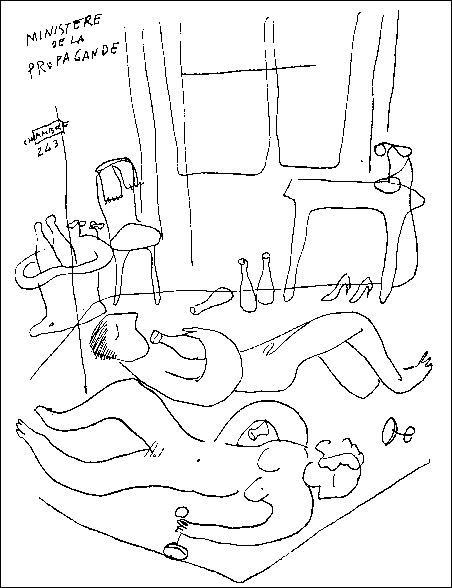Montparnasse
John Glassco
(Viking/Compass ---
Out of Print)

He was young, smart, beautiful and adept in French. An encounter the first week with the lithographer Adolf Dehn (whose works, Glassco tells us, were filled with "ecstatic greed, cruelty, and joy") opened the door to his meeting, eating with, drinking with, sometimes sleeping with the hundreds of hungry, smart, opportunistic, charismatic characters who hung out in Montparnasse --- the likes of Hemingway, Joyce, Kay Boyle, e. e. cummings, Gertrude Stein, Ford Maddox Ford, Alan Tate, Marcel Duchamp.
- But they're not great bores, my dear fellow. Now Dickens, for instance among his other supreme accomplishments, can be tedious on a really grand scale. He has created at least two of the supreme bores in English literature, Mr. Peggotty and Stephen Blackpool. Like everything of Dickens, their stature is epic, mythological. Besides them, Jean Valjean and Lambert Strether are quite insignificant.
Reading Memoirs of Montparnasse is like running into a dear, witty old friend, one with whom you spent many a long night, many years ago, over bad red wine and spaghetti, in conversation that raged over the world of ideas and experience, a time that left the two of you ecstatic, exhausted.
And you find him (or her) in a place you least expected, not unlike the way I picked up this book (I had heard of it for years; never found it until now). And you take up just where you left off, going on as you did dozens of years ago, reminiscing about sex and love and wine and music and food, art and literature.
The Parisian life came to John Glassco when he was but eighteen, and he captures us here in exactly the same way Paris came to own him. He can't walk down to Porte Saint-Denis without running into the painter Sidney Schooner who knows of a small bistro, "very dark," with "tarnished mirrors, filled with elderly respectable bottle-faced men, all bent over their plates, many of them wearing infants' bibs to protect their shirts from the juices and sauces."
There, in the café, with Schooner (along with the jealous reader) Glassco stops his musings as all of us would do at such a moment, to consider the treat before us, in this case, snails:
- I had never tasted such snails; fat, tender and of marvellous flavour, they were swimming in a sauce of browned butter, parsley and garlic.
He asks Schooner how he ever found such a place: "The thing to watch out for in a restaurant is a head-waiter or a maître d'; as soon as you see one, turn round and walk out. Also, beware of chafing-dishes."
- I've found that three good signs are a small menu, darned tablecloths, and an old dog on the premises.
Later, Glassco will go off, stop for a brandy and find one of his new friends and who has recently been thinking about the couplets of Cocteau,
- Le nègre, dont brille des dents
Est noir dehors, rose dedans
which immediately puts Glassco in mind of Marvell,
- Had he lived longer, he would have been
Lilies without, roses within...
In two years, the writer lives through twenty years worth of food, love, art-talk, parties, meeting the greats ... and prostitution (he works in a male bordello for a while). And walking, always walking, dazed by the glory that is Paris.
